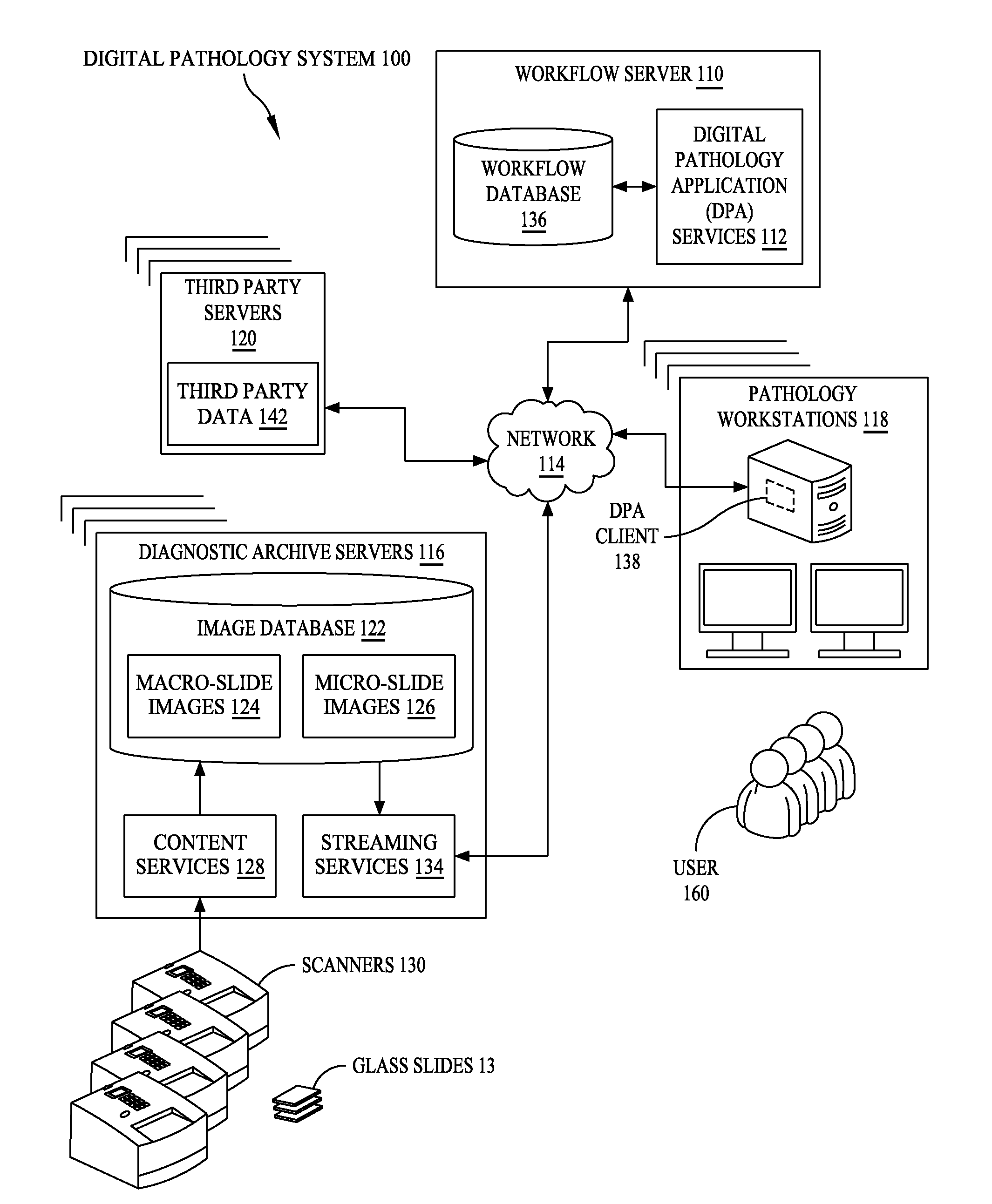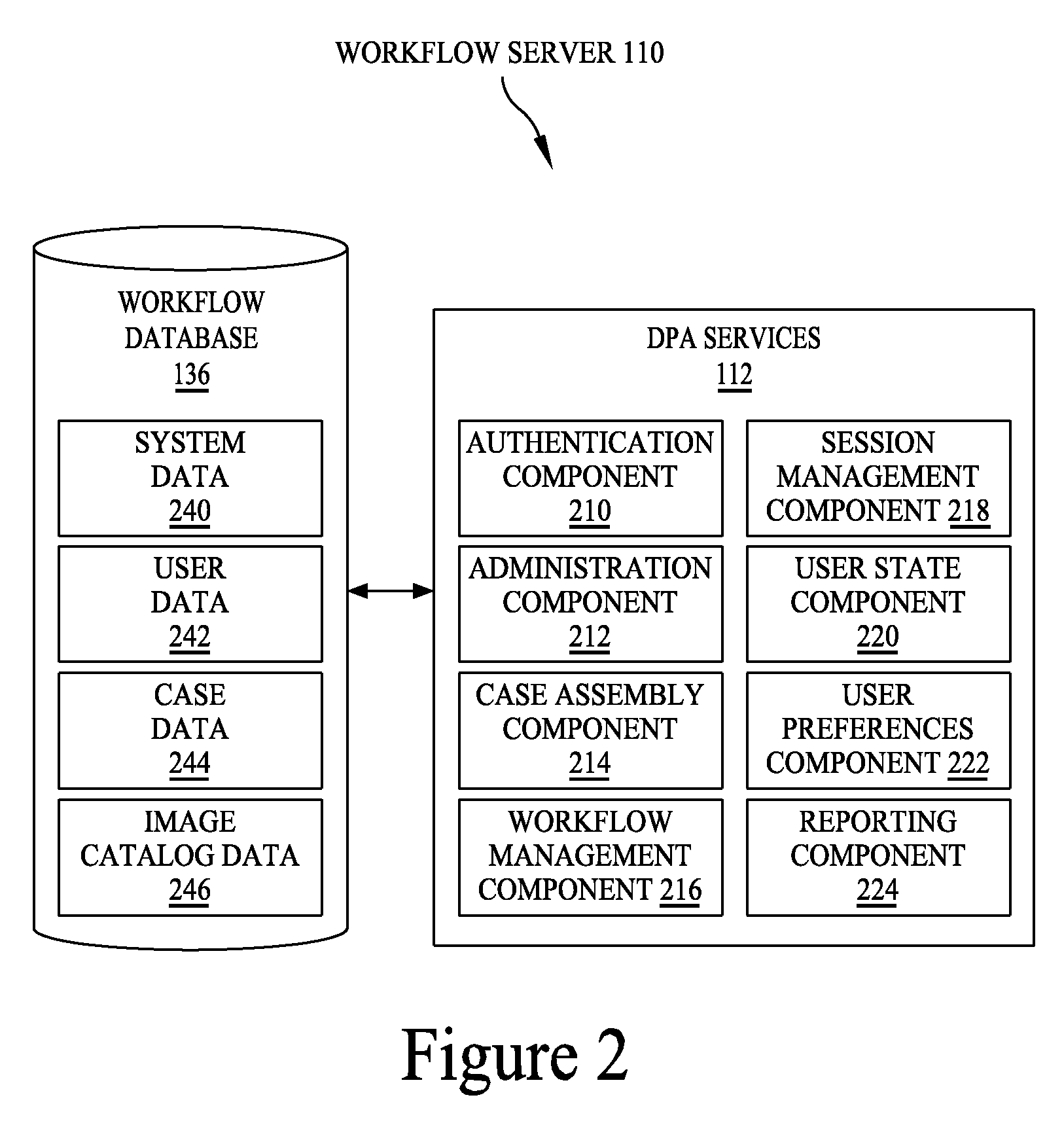Digital pathology system
a digital pathology and image technology, applied in the field of information system and image processing techniques, can solve the problems of manual handling of packages and their contents, inconvenient and time-consuming, physical handling and distribution of case packages, and the risk of mixing the contents of two or more case packages, so as to facilitate the automatic handling of digital pathology images, speed and efficiency of such handling, and speed and efficiency with microscopes
- Summary
- Abstract
- Description
- Claims
- Application Information
AI Technical Summary
Benefits of technology
Problems solved by technology
Method used
Image
Examples
Embodiment Construction
[0057]FIG. 1 is a functional block diagram showing an example of a digital pathology system 100 according to the present disclosure. Among other aspects, digital pathology system 100 is configured for manipulation by and interaction with pathologists, and supports graphic visualization elements that resemble the slide navigation tools and features that are familiar to pathologists who have used microscope systems. Such resemblance includes both appearance and function. At the same time, system 100 benefits from the speed, efficiency and computing power of a digital image and data processing system that reduces the need for pathologists to depend upon physical slides, optical microscopes and case package paperwork files.
[0058]Digital pathology system 100 may include a workflow server 110, where “workflow” refers primarily to the pathologists' workflow. Workflow server 110 may be a centralized server for hosting digital pathology application (DPA) services 112. Via a network 114, work...
PUM
 Login to View More
Login to View More Abstract
Description
Claims
Application Information
 Login to View More
Login to View More - R&D
- Intellectual Property
- Life Sciences
- Materials
- Tech Scout
- Unparalleled Data Quality
- Higher Quality Content
- 60% Fewer Hallucinations
Browse by: Latest US Patents, China's latest patents, Technical Efficacy Thesaurus, Application Domain, Technology Topic, Popular Technical Reports.
© 2025 PatSnap. All rights reserved.Legal|Privacy policy|Modern Slavery Act Transparency Statement|Sitemap|About US| Contact US: help@patsnap.com



